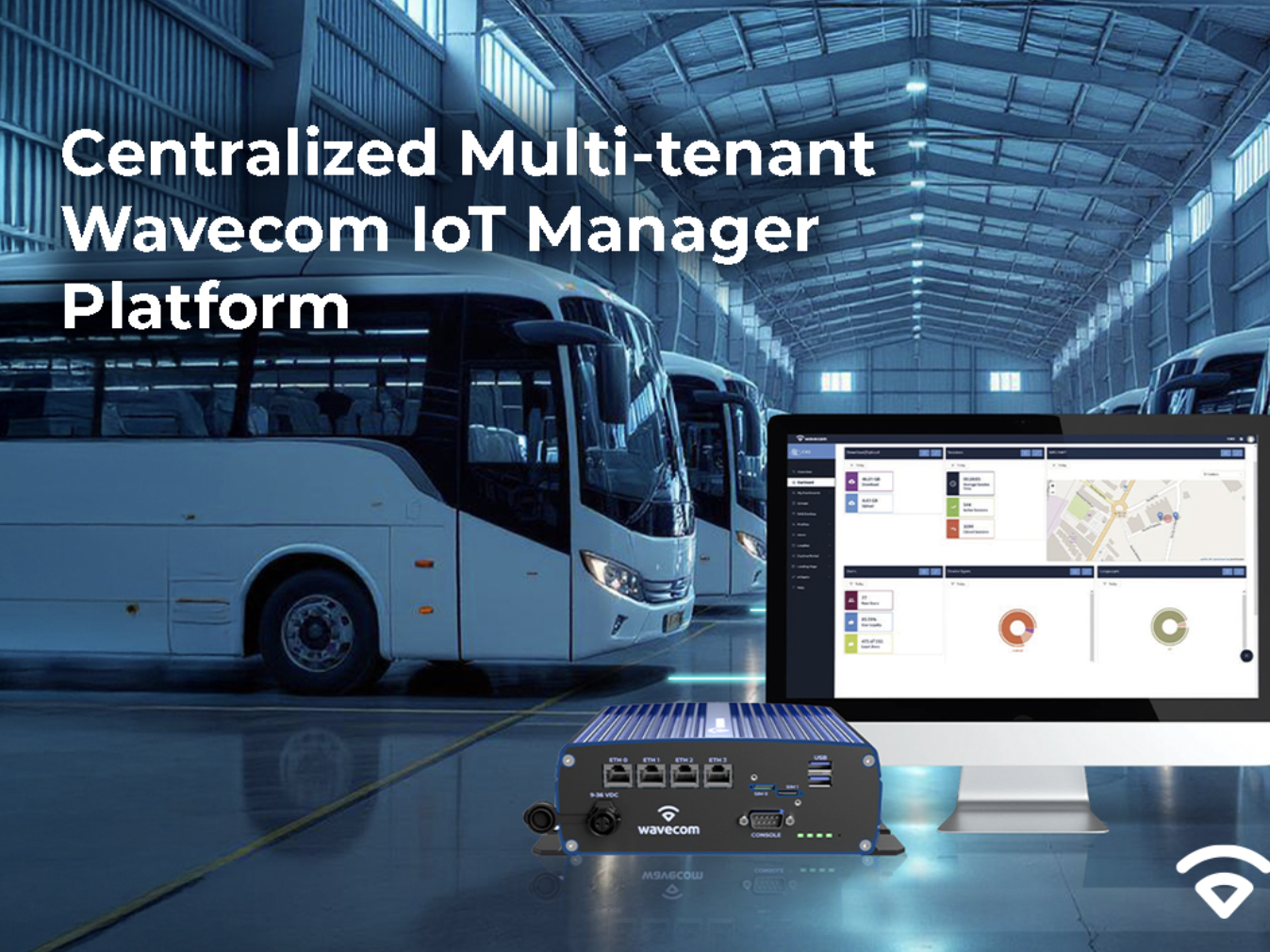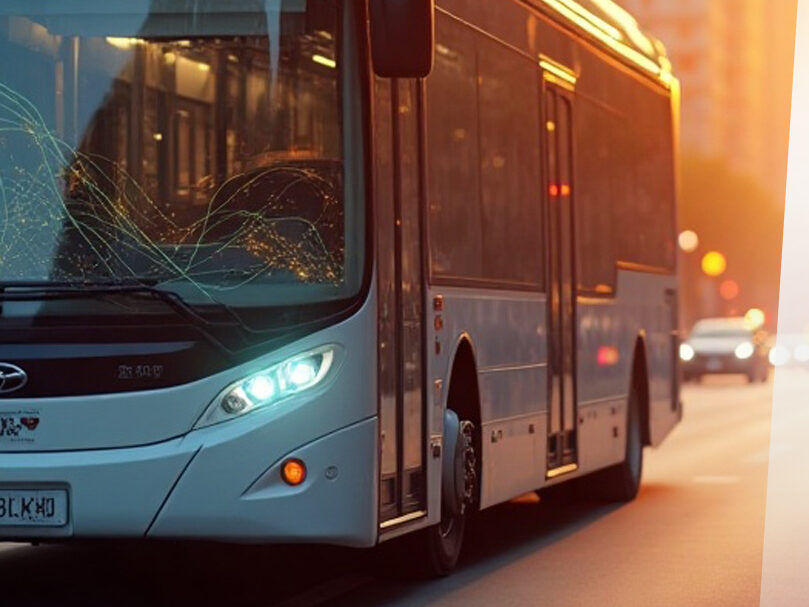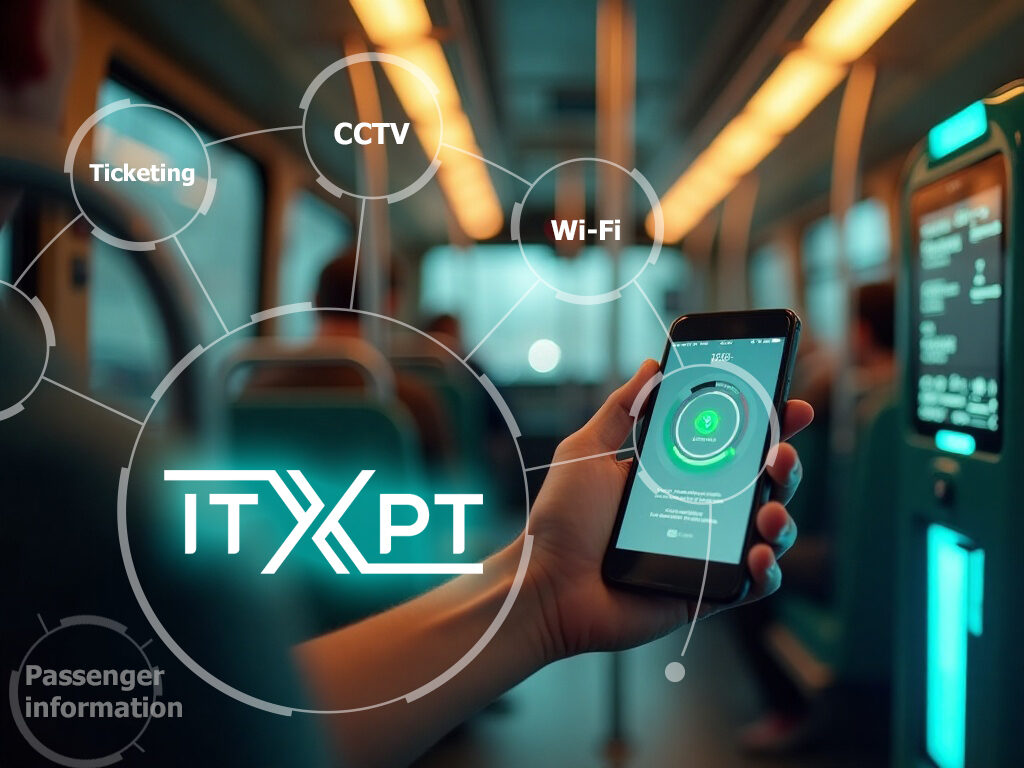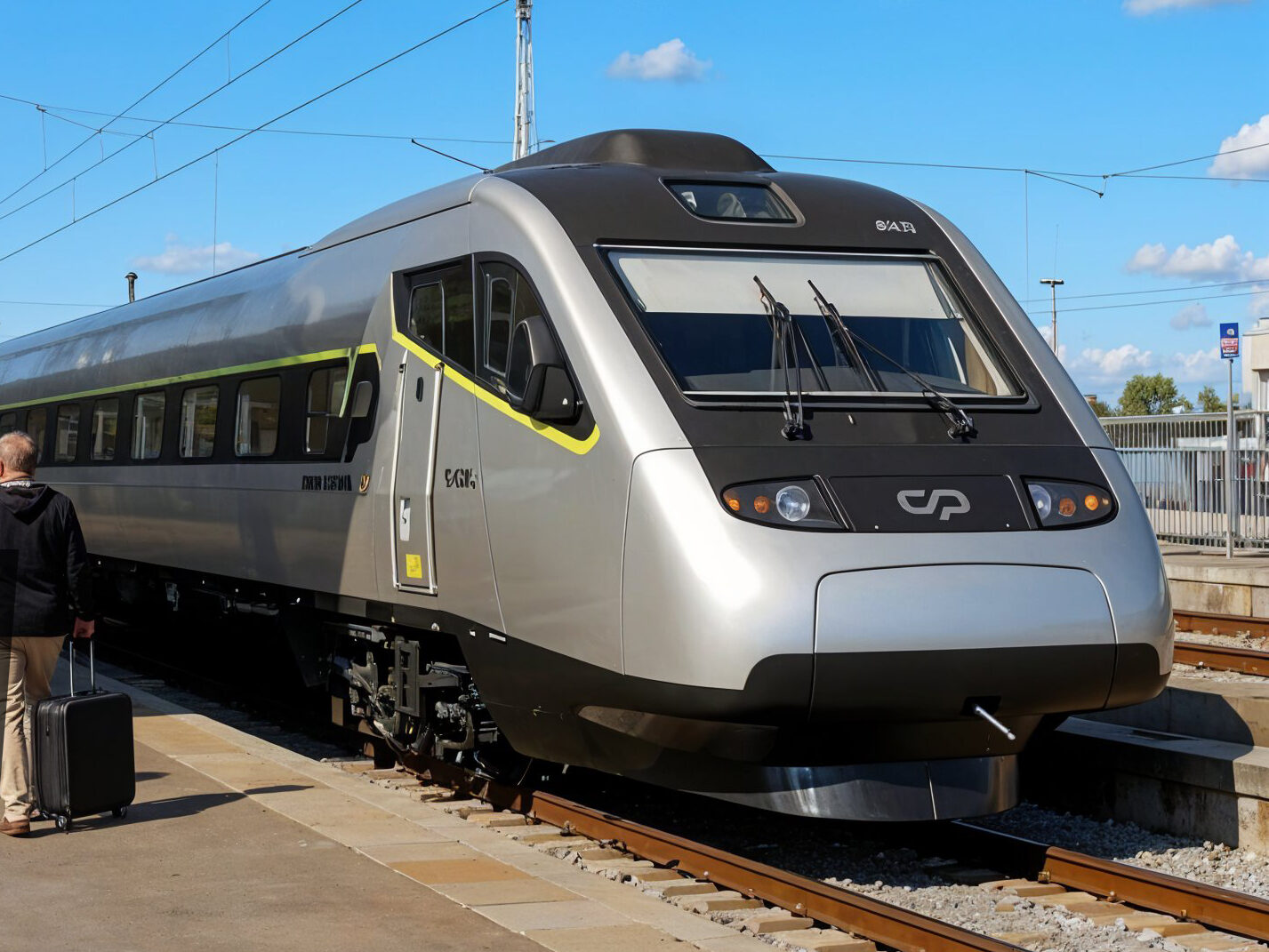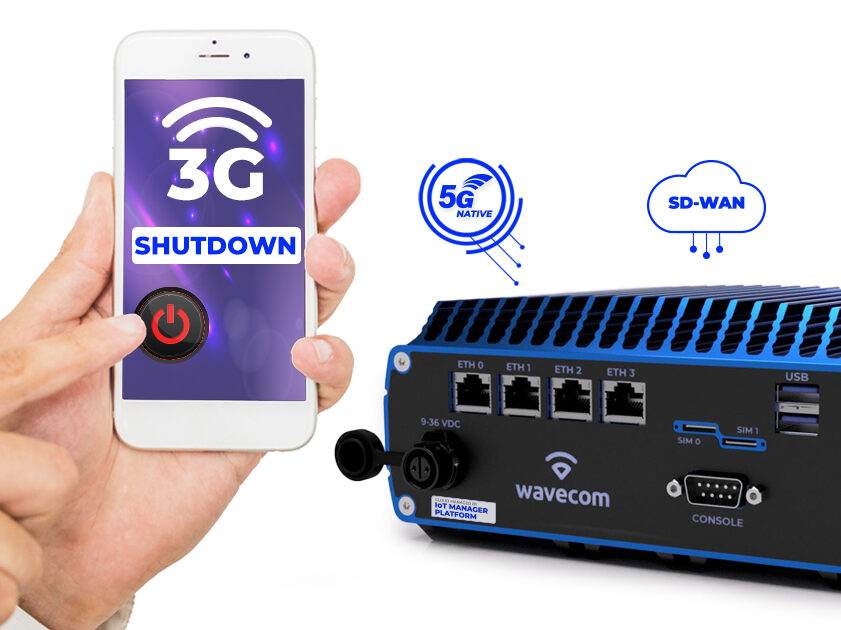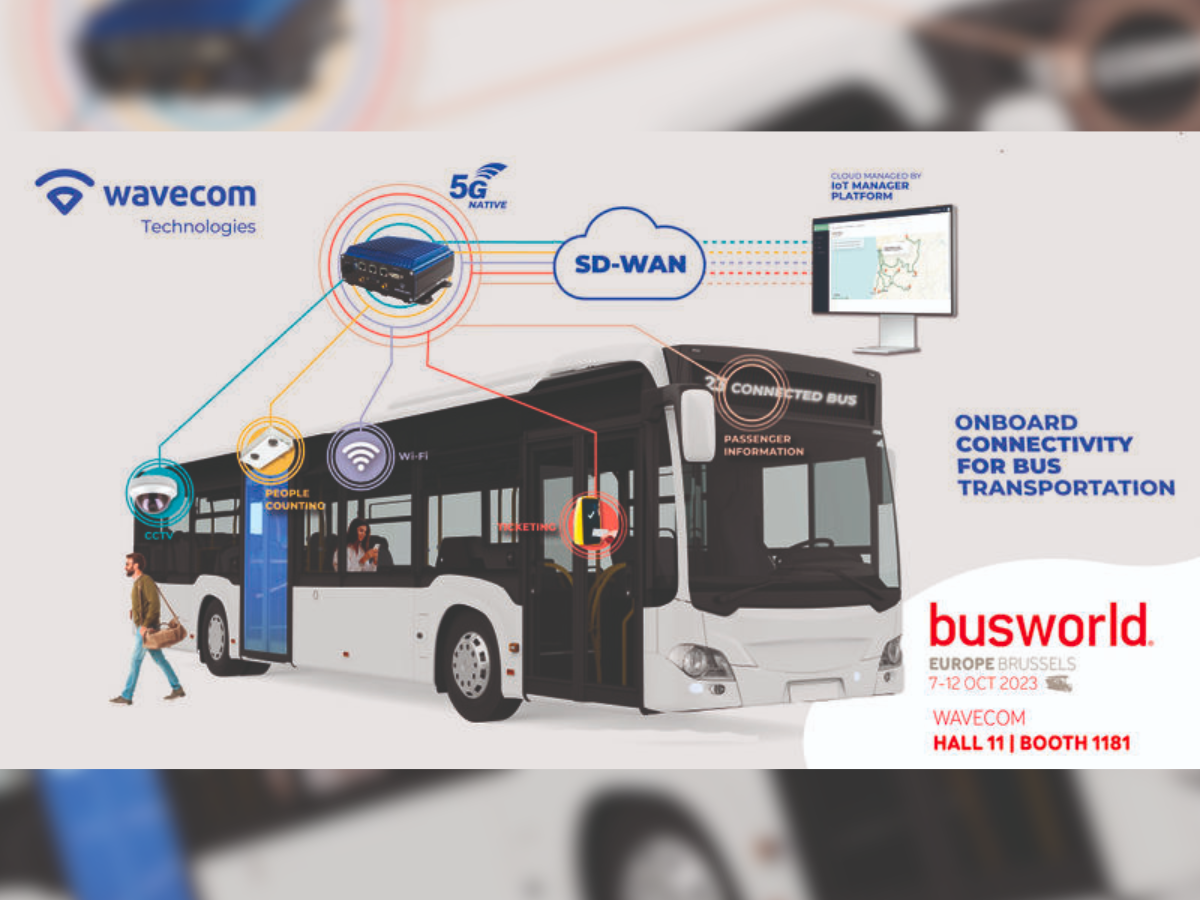The advent of 5G and Wi-Fi 6/6E (IEEE 802.11ax™) has represented a further evolution in the field of wireless technology.
The question of replacing Wi-Fi with 5G for on-board bus connectivity is sometimes raised, as both offer high transmission rates and low latency. But it is more beneficial to focus on how Wi-Fi 6/6E and 5G can be used together, rather than on which technology is superior.
5G is a necessary component in any environment where on-board Wi-Fi internet access for bus passengers is required. A bus behaves as a mobile unit travelling along a route, with dynamic signal switching between 5G cells at the nearest BTS (Base Transceiver Stations). Wi-Fi 6/6E provides high-performance connectivity in a high-density environment, such as a bus, where many passengers have to stay connected at the same time.
The purpose of this white paper is to discuss the coexistence between 5G and Wi-Fi (Wi-Fi 6/6E) for on-board bus connectivity, wherever it is travelling in urban, sub-urban or rural environments.

The advent of 5G and Wi-Fi 6/6E (IEEE 802.11ax™) has represented a further evolution in the field of wireless technology. Given the availability of these two wireless technologies, both of which offer high transmission rates and low latency (e.g. when accessing high-speed internet via smartphones or laptops), the question of replacing Wi-Fi with 5G for on-board bus connectivity is sometimes raised.
While there are differences between Wi-Fi 6/6E and 5G, the two technologies can be used together to great effect in on-board bus connectivity. So, it is more beneficial to focus on how Wi-Fi 6/6E and 5G can be used together, rather than on which technology is superior.
5G is a necessary component in any environment where on-board Wi-Fi internet access for bus passengers is required. A bus behaves as a mobile unit travelling along a route, with dynamic signal switching between 5G cells at the nearest BTS (Base Transceiver Stations, wherever it is travelling in urban, sub-urban or rural environments.
Wi-Fi 6/6E provides high-performance connectivity in a high-density environment, such as a bus, where many passengers have to stay connected at the same time.
On-board Bus Wi-Fi Connectivity
On-board Wi-Fi provides passengers with Internet access that enhances their travel experience. A fast, reliable on-board Wi-Fi connection allows passengers to access social media, communicate with friends, listen to playlists, watch YouTube videos, and stream movies while travelling. It is also an essential service for business passengers, allowing them to stay connected to their operations and staff while moving.
Bus operators who offer this high-demand service are likely to see an increase in customer loyalty. Therefore, the passengers are motivated to talk about their positive experience and recommend the bus operator to their friends, family, or colleagues. It is therefore vital for bus operators to provide a reliable on-board Wi-Fi service to maintain customer satisfaction and prevent potential loss of passengers to competitors offering superior Wi-Fi connectivity.
For data security, staff use the primary network, while passengers access the guest network. Client isolation ensures that devices on board can only connect to the Internet and cannot communicate with each other.
The use of a captive portal provides network isolation, which increases security by acting as the login page when accessing the network on a guest device. The passenger is required to log in with the credentials provided upon purchasing a ticket.
Based on a captive portal, Wi-Fi also provides a way for advertising and promotional activities, offering bus operators an additional source of profit.
5G and Wi-Fi 6/6E Co-existence
The objectives of Wi-Fi 6/6E and 5G are both to enhance bandwidth and network speeds, as well as reduce latency. Although there are some differences between Wi-Fi 6/6E and 5G (including frequency, authentication, licensing and use cases), the two technologies are used together to great effect in on-board bus connectivity. So, it is more beneficial to focus on how Wi-Fi 6/6E and 5G can be used together, rather than on which technology is superior.
The coexistence of 5G and Wi-Fi 6/6e provides an optimal solution for passengers on-board a bus, offering fast, seamless, and secure connectivity. The ability to connect seamlessly between Wi-Fi 6/6E and 5G networks is another benefit of interoperability.
With both technologies now supported by connected devices such as smartphones or laptops, passengers can also enjoy a smooth experience when moving between on-board Wi-Fi and 5G networks.
The two wireless standards, 5G and Wi-Fi 6/6E, address the passenger growth need for advanced connectivity. Each increases the bandwidth and capacity of networks, and both are faster than their predecessors.
5G
5G has represented a significant advancement, offering increased network speeds and enhanced reliability. The use of higher frequencies enables 5G to transfer data at faster rates and provide superior support for real-time communication.
5G is a cellular technology that uses BTS, small cells and radio signals to transfer data and provide connectivity to end-user devices and covers a large geographic area. 5G is a cellular technology carrier-based, running on licensed spectrum bands, preventing interference between connected devices.
On-board bus Wi-Fi connectivity operates similarly to creating an AP (Access Point) with which passengers connect their devices (e.g., smartphones), and must run on a high-capacity network such as 5G. A modular gateway on-board the bus utilises data-SIM for high-speed uploading and downloading of data packets from 5G cells at the nearest BTS along the bus route or at bus stops.
Wi-Fi 6/6E
Wi-Fi 6E is an extension of Wi-Fi 6 that utilises the unlicensed spectrum (doesn’t require licence fees to use) available in the 6 GHz frequency range, providing increased capacity, efficiency and flexibility in line with 5G features. The network security in Wi-Fi 6/6E is easier to guarantee for devices than in 5G Networks, thanks to WPA3 (Wi-Fi Protected Access 3).
The environment on-board a bus can be considered as a high-density one, given the large number of passengers who need to stay connected simultaneously at any given time, without causing network congestion, that compromises performance and functionality. Wi-Fi 6/6E provides a more reliable performance in high-density environments, improving connectivity continuity. This ensures a reliable, resilient and uninterrupted service for many passengers connected at the same time on board the bus.
Connected Bus Solution
The Connected Bus solution has been developed with the specific needs of bus operators in mind, with the aim of significantly improving their business efficiency and profitability in a modular and evolving way, wherever a bus travels along a route in an urban, sub-urban or rural environment.
Mainly, it comprises a modular Gateway (5G Native) installed on-board of a bus vehicle, which is cloud managed by IoT Manager/Multi-Tenant Platform (5G WAN Manager | SD-WAN), through a GUI-based dashboard showing real-time status and performance metrics, as depicted in Figure 2.

Modular Gateway (5G Native)
In addition to being 5G native and currently offering Wi-Fi 6/6E, theModular Gateway is characterised by a high degree of modularity and evolvability.
It supports two 5G modems, providing redundancy by using SIMs from two different MNOs. The antenna connected to the Modular Gateway and mounted on the roof of the bus picks up the signal switching between 5G cells at the nearest BTS along the bus route or at bus stops.
Inside the bus, passengers connect to the Wi-Fi network via Modular Gateway, which provides two separated Wi-Fi 6/6E Access Points that are already ready to evolve to Wi-Fi 7 in the near future. The environment on-board a bus can be considered as a high-density one, given the large number of passengers who need to stay connected simultaneously at any given time. Wi-Fi 6/6E provides a more reliable performance in high-density environments, thereby improving connectivity continuity.
Conclusion
Although there are some differences between Wi-Fi 6/6E and 5G, they both increase the bandwidth and capacity of networks and are faster than their predecessors. The two wireless standards can be used effectively together to meet the growing passenger demand for advanced on-board bus connectivity.
Rather than viewing 5G and Wi-Fi as competitors, it is important to recognise their complementary nature and the benefits they can offer in on-board bus connectivity scenarios. It is therefore more beneficial to focus on how Wi-Fi 6/6E and 5G can be used together, rather than on which technology is superior.
As a result, passengers on-board the bus have access to high-speed Internet via Wi-Fi 6/6E, enabling them to send and receive emails, access social media, watch videos and listen to music without being restricted by the limits of their own mobile data plans.
Considering the Wavecom Technologies Connected Bus solution, the Modular Gateway ensures optimal passengers’ communication via Wi-Fi 5/6E, regardless of the cellular network they typically use on their mobile assets. This enables bus operators to provide passengers with a reliable internet connection, often faster than offered by their own mobile phones.
This article was originally published by Wavecom.





